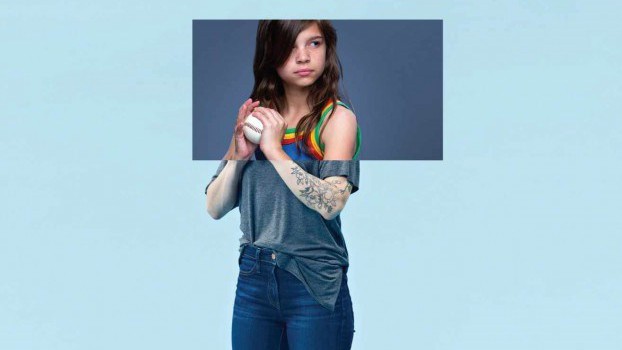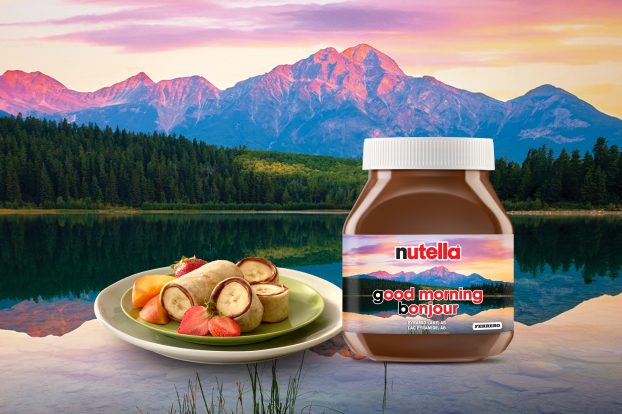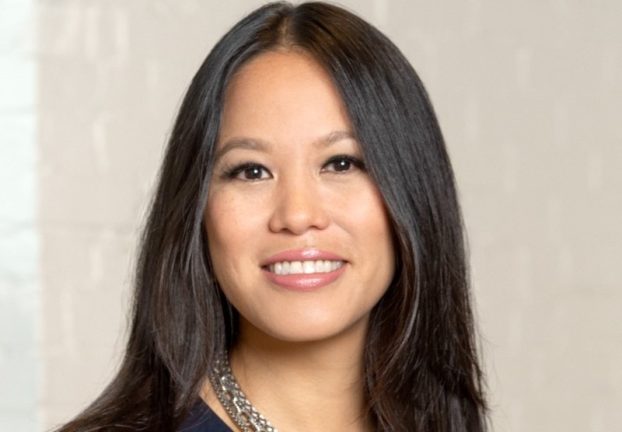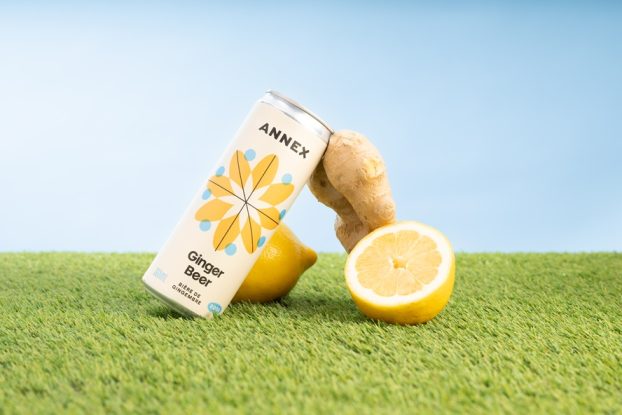As brand manager of male grooming at Procter & Gamble, Robb Hadley knows a thing or two about Canadian men. First, they’re hairy – some of the hairiest in the world, with a high incidence of chest foliage. They’re also more likely to experience skin sensitivity than their American counterparts, with our harsh winters putting Canada close to Russia on that front. But when it comes right down to it, Hadley says, facial hair concerns differ as much between next-door neighbours as different nations.
“Local insight is important – that’s where you find your focus,” explains Hadley, 35, who manages Gillette, Old Spice and Braun in Canada. “But that should be about 20 to 30% of what we do, versus finding global consumer needs and meeting them.”
And that global consumer need, where shaving is concerned, has always been comfort. Men have several opportunities a week to assess whether they’re satisfied with their razor, Hadley says. “If not, they’re going to leave.”
Consumers certainly have plenty of options. Research firm Datamonitor reports that in Canada alone, the men’s care industry brought in $1.6 billion in total sales last year. When it comes to P&G’s corner of the market, Gillette has 10 brands and 136 SKUs (including razors, blades, shaving cream, hair care, body wash, deodorant and antiperspirant); Old Spice has one brand and 62 SKUs (including antiperspirant, deodorant, body wash, fragrance and body spray); and Braun has two brands and 40 SKUs (including electric shavers and body hair trimmers).
With constant innovation, men’s grooming has never been an easy category, and it recently got tougher, with strong contenders upping their game and new players hitting the aisle. Unilever’s growing Axe portfolio, which targets youth as they enter the category, competes with both Gillette and Old Spice, offering deodorant, antiperspirant, shower gel, hair care and body spray. Dove’s Men+Care line, which launched earlier this year, challenges the same brands with its body and face wash. Although Dove’s portfolio is limited, it speaks to a more mature audience and has strong ties to the female shoppers in men’s lives.
For Hadley, who’s spent more than a decade marketing to women at P&G, the men’s grooming category is a welcome change of pace. Hadley joined the company as assistant brand manager for Tide in 1997, after starting a BBA at Wilfrid Laurier University and finishing at École Supérieure de Commerce in Rennes, France. He went on to become brand manager for Cheer, Gain and Dryel, then took a broadening assignment selling P&G’s fabric and homecare portfolio to Zellers, before returning to marketing as brand manager for Pampers and then for the laundry portfolio. After a parental leave in 2009, he returned last September and assumed his current title, leading a team of six dedicated marketers, with a multifunctional team of over 20.
Since then, there’s been a lot to learn. “I grew up in a P&G world that was really female focused – I know everything there is to know about how to market laundry detergent primarily to women,” he says, laughing. “I did not expect there to be that big of a difference, in terms of how guys consume media, how they react to advertising messaging, how they consider changing brands, but it’s been far more different than I had expected.”
One immediate difference is the tone of advertising. As Hadley notes, men’s grooming “uses humour more than our female advertising does. It takes itself a little less seriously than it did 15 years ago.” You can see this strategy at work in the “Gillette Body Shaving” digital campaign crafted by Toronto-based BBDO/Proximity Canada, which took home the North America Platinum Award at the 2010 International AME Awards. It shows how to shave various body parts, including the groin, with voiceover that smirkingly declares, “You might say, when there’s no underbrush, the tree looks taller.”
And, of course, there’s the Old Spice “Smell Like a Man, Man” campaign – made famous by Wieden + Kennedy Portland’s “Man Your Man Could Smell Like” commercial, which starred former NFL wide receiver Isaiah Mustafa. It called out men using “lady-scented body wash” and quickly went viral after its Super Bowl release.
But marketing to men isn’t all yuks. Lately Hadley’s been hard at work launching Gillette’s new razor, the Fusion ProGlide. Before the product hit shelves in June, over 100,000 samples had been distributed in person and through online giveaways, and 40 million Canadian PR impressions had been delivered with help from PR agency Porter Novelli in Toronto.
Word of mouth has been a key factor in the launch, with “real guys” becoming brand ambassadors. In April, Gillette staged an event in Toronto’s Yonge-Dundas Square with Toronto-based experiential marketing company GMR, delivering the ProGlide Challenge to passersby. Proximity, Gillette’s global agency for digital, fed video footage to the brand’s Facebook page, so interested parties could see other men trying the product and post their own reviews.
Hadley says the goal of events like the ProGlide Challenge is to “take the experiential and amplify it digitally.”
When Hadley spoke to strategy in May, pre-launch, he’d just returned from Montreal, where Gillette had shot its first local television spot in Canada in about 15 years. Very little of Gillette’s advertising is produced in Canada (both the global and North American regional offices are based out of Boston) but Hadley says in this case, it was important to do so.
“The core idea behind the advertising [is] real guys trying the product, loving it and being converted from skeptics into believers,” he says. “We needed to get local Canadian credible guys, and shooting in New York or Brazil or South Africa to try to replicate a French-Canadian accent would not be believable.”
It’s not the first time this concern about believability has come up. Gillette has a global platform called “Champions,” which features pro athletes like baseball player Derek Jeter and tennis star Roger Federer. But the response in Canada hasn’t been as strong as elsewhere.
“Every time we put those guys in front of Canadians, they were like, ‘Yeah, I like them but realistically they’re not approachable, they’re not relatable,’” Hadley says. “So as a Canadian organization we went out and looked to take the same strategy, which is achievement sports marketing, but [use it in] a more credible, relevant way.”
The result was a branded content deal with Canadian sports station The Score last year to develop Gillette Drafted, a contest that yielded broadcast segments inspired by reality-TV franchises like Idol and Top Model. Hopefuls auditioned to become “Canada’s next sportscaster” – using Gillette products to get ready for their closeup – and the winner nabbed a job at The Score and a one-year spokesperson contract with Gillette.
Hadley says Drafted is “all about achievement, it’s all about confidence.”
Of course, it’s also about selling product. “Drafted is not just about blades and razors,” he says. “It’s about our antiperspirant business, it’s about body wash, it’s about the top of the equity pyramid, which is guys looking, feeling and being their best, supported by a whole portfolio of products. So there’s scale marketing at a brand level.”
The success of last year’s campaign led to Gillette Drafted 2, now underway. In May and early June of this year, the company ran a six-city national audition tour with GMR, setting up the ProGlide Challenge beside it. Finalists will compete this month before a panel of judges, with episodes to air in the fall. This time around, however, the episodes will be 23 minutes long, replacing last year’s eight-minute on-air segments, which Hadley says had started to feel “a little promotional” towards the end.
“Branded entertainment is not just about hitting the viewer over the head with product benefits,” he says. “We’ve got 30-second advertising that does that.” Moving to half-hour episodes will ideally increase the perceived legitimacy of the show and, as Hadley says, “deepen the emotional connection.”
To complement the ProGlide razor, Gillette is launching a ProSeries skincare line this month, including a facial cleanser, a thermal facial scrub and an intense cooling lotion. Though these products are launching in direct competition with Neutrogena Men and Nivea For Men, which offer similar products at similarly affordable price points, Hadley believes his company is at an advantage, since Gillette (1895), Old Spice (1937) and Braun (1921) are all historically male brands.
“Guys are more interested in grooming products than they were 30 years ago,” Hadley says. “But they’ve got to be designed for men – it can’t be a female product with a man’s label stuck on it…We’ve got 100 years of experience [at Gillette] building and designing products for men.”
Mind you, Gillette has only been part of Procter & Gamble for five of those years. When P&G bought Gillette for $57 billion in stock in 2005, it was the largest acquisition in P&G’s history, and created the world’s biggest CPG company. So how much has the brand’s marketing plan changed since the buyout? Not much, according to Hadley.
“We’ve got a lot of Gillette heritage employees that continue to work in the P&G family. From a marketing standpoint, we haven’t changed a lot,” he says.
For Hadley, working on Gillette is almost like working for a different company, without leaving P&G: “We’ve retained a lot of how the original Gillette company operated, which was much more top-down, fast decision-making. They still operate more like that than P&G did, which was more of a ground-up, local consensus-building organization.
“We’re five years in but we’re still finding the sweet spot between making quick decisions, getting out and being nimble, and deeply understanding a local marketplace so we’re winning consistently.”
When it comes to consistent wins, Hadley says having access to Gillette’s worldwide army of talent helps. “To be able to take the best [advertising] from the globe, put it into my marketplace and know it’s going to win with my consumers, that frees my time up to invest more deeply with my retail partners and consumers,” he says.
And it works both ways: because Gillette Drafted was recognized with a P&G Canadian Marketing Award, Hadley says it’ll now be shared with marketers in other regions, who can develop their own versions. “That is a made-in-Canada idea that now is going to get exported all over the world,” he says.
THREE QUESTIONS
What do you like to do in your spare time?
“Invest time with my kids. Sandbox has replaced sand traps.”
What’s something people would be surprised to learn about you?
“I ride a bike to work.”
What’s your personal motto?
“All things in moderation, including moderation.”























